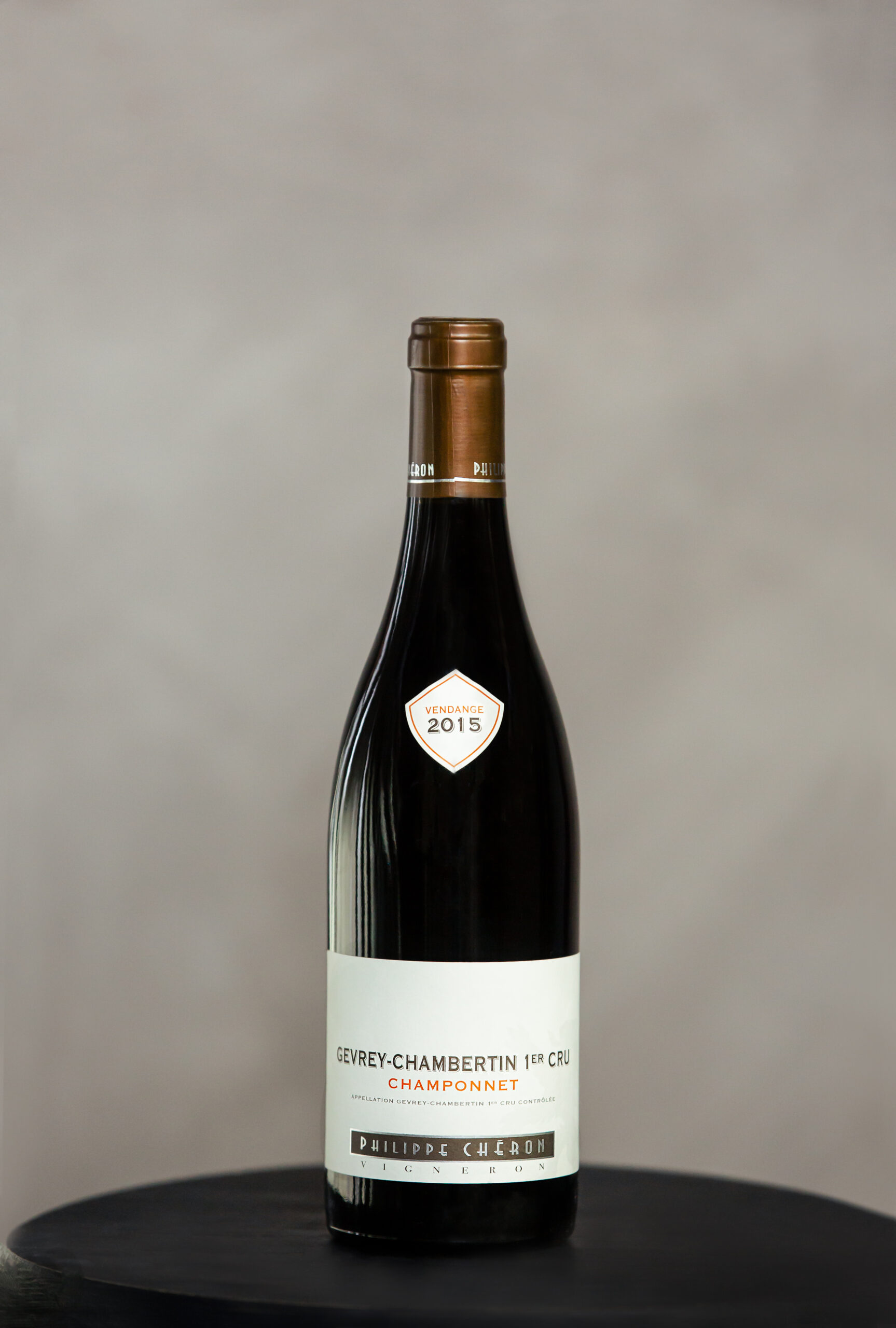Veinipood
Domaine Philippe Cheron Gevrey-Chambertin 1Cru Champonnet 2015
72.00 €
” Püüame teha kõik võimaliku, et vanad viinapuud saaksid end parimast küljest näidata.” Philippe Cheron
Suurepärane Gevrey klassika! Champonnet 1er Cru’d iseloomustab tasakaal jõulisuse, pehmete tanniinide ja peene happesuse vahel.
Viinamarjad korjatakse ja sorteeritakse käsitsi. Toimub külm eelmatseratsioon(10 päeva 8-10 C juures)välditakse mehhaanilist purustamist. See aitab väljendada Pinot noiri parimast küljes!
Seejärel toimub fermentatsioon 3-4 nädalat, peale selitamist vein laagerdub 12 kuud Prantsuse tammevaatides, millest 25% on uus. Kasutatakse ainult Prantsuse tammevaati, mis on pärit Kesk-Prantsusmaalt ja on läbinud õrna röstimise, mis aitab luua puuviljase ja ümara veini, millele on lisatud peeneid tamme noote. Peale pudeldamist lastakse veinil puhata veel 3 kuud!
Viinapuud, mis on istutatud 1988 annavad saaki 2500 pudelit!
| Riik | |
|---|---|
| Regioon | |
| Veinimõis | |
| Sort | |
| Viinamarjasort | |
| Tootmisaasta | |
| Alkohol | 13 % |
| Temperatuur | |
| Pudeli maht | |
| Liitri maksumus |
HISTORY
In the late 1930’s, Paul Misset, Philippe Cheron’s grandfather, acquired parcels of vines in the Vougeot and Nuits Saint Georges communes. Not being a wine-grower, he entrusted their management to tenant wine growers in Vosne -Romanée. Starting with these original parcels, Paul Misset’s grandchildren, two generations later, have built up a wine domaine which today covers 5 hectares, spread over the Nuits Saint Georges, Vosne Romanée, Chambolle Musigny and Clos de Vougeot appellations.
The domaine’s winery and cellars are located in the historical centre of Nuits Saint Georges. The vaulted 19th century cellars allow the wines to be aged in perfect conditions and the modern, efficient winery has recently been totally refurbished.
After working as technical director at Domaine Belland in Santenay, Philippe Cheron took over the family estate in 2011. A trained engineer, he studied at the wine university in Suze la Rousse before gaining important experience making wine in the Rhône valley and then Burgundy. To round off this experience, he also took an agricultural training course at the Lycée Viticole in Beaune.
VINEYARD MANAGEMENT
Most of the domaine is made up of old vines (70% are over 50 years old) located in prestigious appellations and climats. Here, they strive to do everything possible to enable these old vines to express themselves as naturally as possible. This also extends, of course, to vinification and ageing.
They grow the Pinot Noir grape variety exclusively, with Guyot training except for the very old vines whose elongated structure requires shorter pruning.
Fertilization consists of merely enriching the vineyards with composts, which helps with microbial life and soil balance. They no longer use herbicides and have replaced these by alternating natural grass cover with ploughing. They also do not use insecticides, having replaced these by mating disruption and an increase in the natural presence of beneficial auxiliary fauna.
Yields are kept deliberately low by pruning and particularly by green harvesting: de-budding and the removal of shoots and double buds. The need for phytosanitary products is reduced by taking a sustainable approach to work in the vineyards and by the aeration of the fruit-bearing area of the plant: lengthening of the cane, leaf thinning and green harvesting.
VINIFICATION AND AGEING
The teams of grape pickers are supervised during harvesting to ensure the grapes are carefully sorted in the vineyards. The harvested grapes are placed directly into small perforated crates, which are quickly transported to the winery. The grapes go onto a vibrating sorting table and are then de-stemmed without crushing and transferred into tank by conveyor belt, thereby keeping the grape berries intact. The battery of concrete tanks is temperature controlled.
The first phase is cold pre-fermentation (8-10°C), which takes around ten days. Having avoided mechanical crushing, the grape berries remain whole during this process. Our aim is to draw out the full expression of the fruit and the varietal aromas of the Pinot Noir.
The next phase is fermentation, started naturally with indigenous yeasts. During this phase, cap punching operations are carried out three times a day for one week (pneumatic punching).
The vatting period finishes with a 6-8 day post-fermentation period with the temperature maintained at around 27°C and a light punching of the cap. On average the wine spends a total of 20-23 days in vat. A moderate pressing (250 grams max 1.8kg) is carried out in a pneumatic press. Settling then takes place in an airtight vat for 7-10 days, before the wine is transferred into barrels where the lees are re-incorporated.
The proportion of new barrels varies from 25 to 75%, depending on the wine and the vintage. We only use oak cask wood from central France, which has undergone a gentle toasting, i.e. a long toasting, at low temperature and of medium intensity, to help us to create a wine with roundness and fruit accompanied by subtle, balanced notes of oak. The wines are aged on the lees for 10-14 months, with ageing continuing at least three months after the end of malo-lactic fermentation.
The wines are then racked and blended in inert tanks. The wines are not fined, but undergo a moderate filtration before bottling. Bottling is carried out by a contractor, guaranteeing that the highest technical standards.




